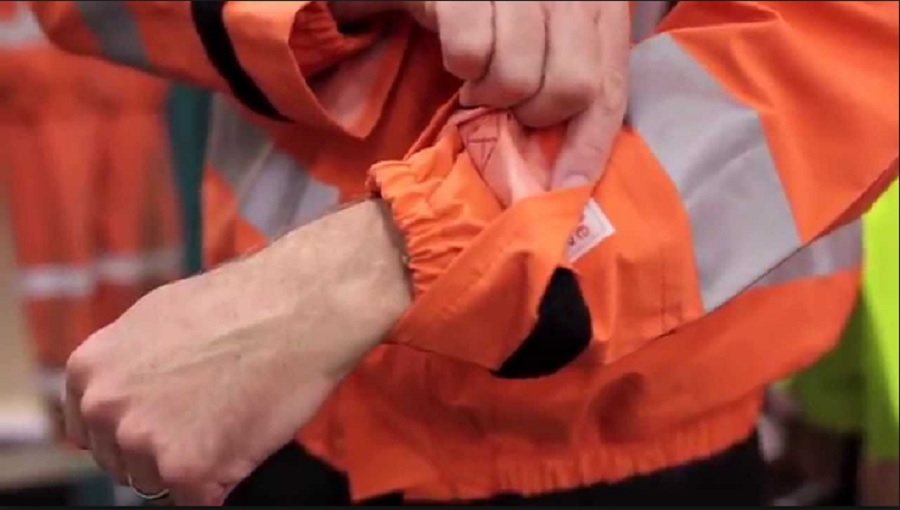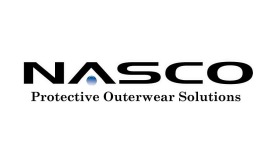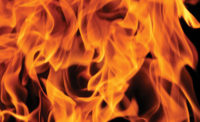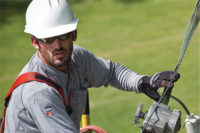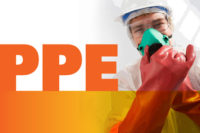History
In 1998, ASTM published the first voluntary consensus standard for rainwear designed to protect workers against arc-flash explosions: ASTM F1891, Standard Specification for Arc and Flame Resistant Rainwear. ASTM rolled out a similar standard (ASTM F1506) four years earlier. But ASTM F1506 applies only to FR clothing. It doesn’t include fabrics and coatings commonly used in rainwear products. ASTM F1891provides test methods, performance criteria and purchasing information for rainwear designed to protect workers from exposure to electric arcs and open flames.
ASTM F1891 and ASTM F2733 require significantly higher levels of protection than the federal government’s FTSM 5903.1. The two standards make an important distinction: FR rainwear with limited protection (tested to ASTM D6413) and FR rainwear to protect against more injuious thermal hazards: arc flashes (ASTM F1891) and flash fires (ASTM F2733).
Scope
This is the governing ASTM Standard for Flame Resistant Rainwear.
Why this standard is important
The creation of standards and test methods for rainwear designed to protect workers against electric arcs and flash fires has expanded the definition of FR rainwear.
Three categories of FR rainwear exist. Each offers different protection. For protection against low-level flame hazards --such as occasional sparks or welding slag -- garment tested to ASTM D6413 could be suitable. Job tasks that involve potential arc-flash hazards and rainwear should make use of protective clothing meeting the requirements of ASTM F1891. Jobs that involve potential flash-fire hazards should require rainwear that meets requirements of ASTM F2733.
Rainwear that complies to F2733 has been exposed to an instrumented mannequin test that predicts the burn injury percentage a worker might expect to receive from a three-second hydrocarbon fire. The predicted burn injury must be less than 40 percent and the material must not melt and drip, ignite, or shrink. Clothing tested must have fasteners and closures that remain functional.
Hazards
An arc flash is the light and heat produced from an electric arc supplied with sufficient electrical energy to cause substantial damage, harm, fire, or injury.
Arc flash temperatures can reach or exceed 35,000 °F (19,400 °C) at the arc terminals. The massive energy released in the fault rapidly vaporizes the metal conductors involved, blasting molten metal and expanding plasma outward with extraordinary force. A typical arc flash incident can be inconsequential but could conceivably easily produce a more severe explosion.
During the arc flash, electrical energy vaporizes the metal, which changes from solid state to gas vapor, expanding it with explosive force. For example, when copper vaporizes it suddenly expands by a factor of 67,000 times in volume.
There are four different arc flash type events to be assessed when designing safety programs:
- Open Air Arc Flashes
- Ejected Arc Flashes
- Equipment Focused Arc Flashes (Arc-in-a-box)
- Tracking Arc Flashes
An arc flash (also called a flashover), distinctly different from arc blast, is part of an arc fault, a type of electrical explosion or discharge that results from a low-impedance connection through air to ground or another voltage phase in an electrical system.
What should employers do to protect employees?
FR is a broad-reaching term with a specific meaning that depends on the work environment. In the electric utility industry, FR means arc resistant (AR). This is the characteristic of the product to provide protection from an electric arc flash. For rainwear, standard requirements are set in ASTM F1891, Standard Specification for Arc and Flame Resistant Rainwear.
OSHA 1910.132(d) states employers must "assess the workplace for hazards." NFPA 70E - 2012 article 130.5 requires an arc flash hazard analysis calculation be performed with the only exception being use of 70E tables, if you meet the table parameters.
Key definitions
Fabric must self-extinguish with less than two-second afterflame and less than six-inch char length according to ASTM Test Method D6413. Each different color of the same fabric must be tested.
Arc Thermal Performance testing must be performed according to ASTM Test Method F1959. The results of the Arc Thermal Performance testing must be reported to the end user as an Arc Rating on a garment label. Rainwear that meets ASTM F1891 complies with OSHA 1910.269. ASTM F1891 is a pass/fail standard with requirements for reporting information not considered for the pass/fail criteria. All garments that meet the requirements of ASTM F1891 must be labled.
Water pressure of 30 psig without leaking must be withstood by the material. The seams of the rainwear must not exhibit any evidence of leakage when exposed to water at three psig for two minutes.
Trapezoidal tear resistance must be evidenced by material of six pounds in the warp direction and six pounds in the fill direction.
Permanent and electrically non-conductive materials must be attached to the rainwear, and shall not degrade the performance of the rainwear.
Flame resistant rainwear material must be used and shall not melt and drip when tested in accordance with ASTM D6413-08 and shall exhibit no more than a two-second after flame time and less than a six-inch char length.
General requirements
1.1 This specification establishes applicable test methods, minimum physical and thermal performance criteria, a suggested sizing guide, and suggested purchasing information for rainwear for use by workers who may be exposed to thermal hazards of momentary electric arcs and open flames.
1.1.1 This specification does not apply to the electrical contact hazards or electric shock hazards involved with electric arcs.
1.1.2 This specification does not apply to flash fire hazards such as industrial hydrocarbon flash fires or other petrochemical flash fire hazards.
1.2 The objective of this specification is to prescribe fit, function and performance criteria for rainwear that meets a minimum level of thermal and physical performance when exposed to a laboratory–simulated electric arc or flame exposure.
1.3 This specification is not intended to serve as a detailed manufacturing or purchasing specification, but can be referenced in purchase contracts to ensure that minimum performance requirements are met.
1.4 Controlled laboratory tests used to determine compliance with the performance requirements of this specification shall not be deemed as establishing performance levels for all situations to which wearers of this protective clothing may be exposed.
1.5 The in-service care and use of this rainwear is beyond the scope of this specification.
1.6 The values stated in inch-pound units are to be regarded as the standard.
1.7 It is the responsibility of the user of this standard to establish appropriate safety and health practices and determine the applicability of regulatory limitations prior to use
Compliance assistance
From any ASTM page on the ASTM website, you can easily search for more than 12,000 standards (by keyword or number) in dozens of industrial, management and other areas. Titles, scopes and the documents referenced are shown for each standard. You can also purchase any standard as an immediate PDF download or by calling ASTM Sales at (877) 909-ASTM
Sponsor: www.nascoinc.com, 800-767-4288
